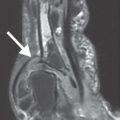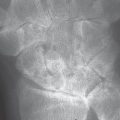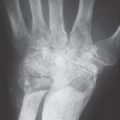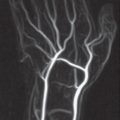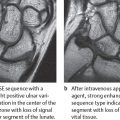38 Rheumatic Fever (Poststreptococcal Reactive Arthritis)
Pathoanatomy and Clinical Symptoms
Rheumatic fever is rarely seen today. The infection with β-hemolytic streptococci, group A, leads to a systemic inflammatory reaction via a secondary immunopathogenesis. In 20–70% of cases, there is a carditis and endocarditis, and in 50–80%, there is a recurrent polyarthritis corresponding to classic reactive arthritis. Sydenham chorea seldom appears, and Jaccoud arthropathy, which is now rare, develops as a result of multiple episodes of polyarthritis.
Radiography
Two forms of disease progression have been described:
Acute articular rheumatism becomes manifest in several joints either simultaneously or in quick succession as migrating polyarthritis and usually affects the ankles and knees. Aside from soft-tissue swelling, only discrete periarticular osteopenia can be seen in radiographs.
Jaccoud arthritis, a nonerosive arthropathy that is referred to as chronic rheumatic fever and chronic postrheumatic polyarthritis, leads to characteristic signs in the hands ( Table 38.1 , Figs. 38.1a, 38.2 ).
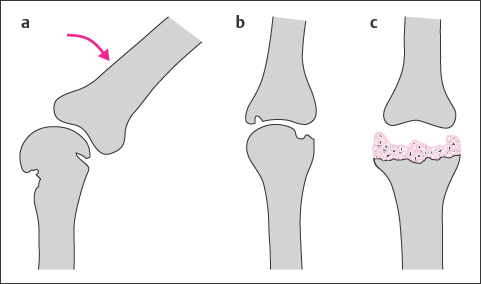
|
Stay updated, free articles. Join our Telegram channel

Full access? Get Clinical Tree


